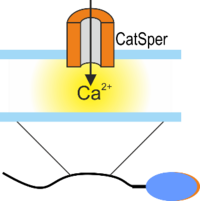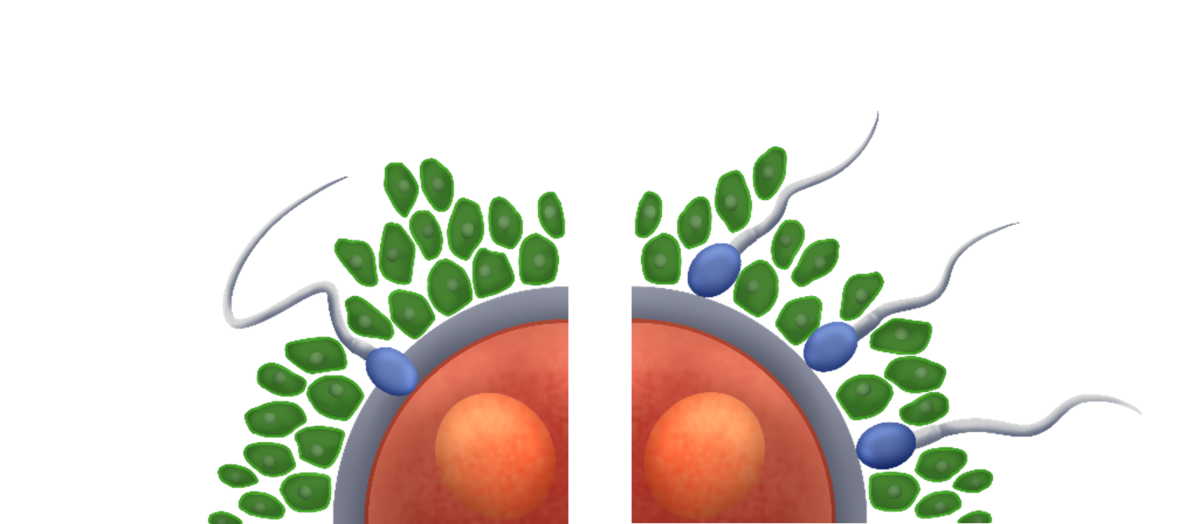To fertilize the egg, sperm must navigate a long and tortuous path through the female reproductive tract. To accomplish this mission, nature has equipped sperm with an impressive set of skills that must be summoned at the precise time and place.
The protective coat surrounding the egg cell is the final barrier that must be overcome for the sperm to fuse with the egg. Generating a uniquely forceful swimming style known as “hyperactive motility”, sperm physically bore through the egg coat to achieve fertilization.
Sperm hyperactivation is controlled by a specific set of proteins in the sperm flagellum, namely the CatSper channel complex. CatSper regulates the intracellular calcium concentration of sperm, and thereby their swimming behavior.

CatSper serves as a polymodal sensor to probe the sperm’s environment. By gating Ca2+ ions into the flagellum, CatSper activation triggers changes in sperm motility.
If the CatSper channels do not function properly, sperm cannot hyperactivate, are unable to break through the egg coat, and will not fertilize the egg. Consequently, men with severe CatSper defects are infertile.
In reproductive medicine, a tailored fertility treatment strategy is required to help these couples conceive. However, a CatSper defect cannot be detected by conventional diagnostics currently practiced in clinical laboratories. This often leads to a delayed recognition for the indication of fertility therapy – or to treatment options unsuitable to address the CatSper-related infertility of the male partner and, therefore, doomed to fail.

Left: With a powerful, whip-like flagellar beat, “hyperactivated” sperm are able to penetrate the egg coat and fertilize the egg. CatSper is indispensable for triggering hyperactivation. Right: If CatSper is dysfunctional, sperm are unable to hyperactivate, are impeded by the protective barrier, and fail to fertilize the egg. Men suffering from a loss of CatSper function are infertile.
To prevent delayed indications and accumulating medical risks as well as physical, psychological, and financial burden for these couples, we have developed a novel test to detect a CatSper dysfunction in the setting of a clinical diagnostic laboratory. Our “CatSper-Activity-Test” can be performed on a miniscule portion of a semen sample in parallel with a conventional semen analysis. A test solution translates the highly complex molecular function of CatSper channels into an obvious motility response that is easily read out with an ordinary light microscope. The test result is delivered in only about 30 minutes.
To enable patients to benefit from this innovation, a university spin-off, Truion GmbH, was founded. The special buffer solutions needed to perform the CatSpe-Activity-Test are available from Truion GmbH as CE-marked medical devices in accordance with the EU's In Vitro Diagnostics Regulation (IVDR 2017/746). www.truion.de

European Patent Application: PCT/EP2020/057904.
"CatSper-Activity-Test for determining male infertility."
Schiffer, C., Brenker, C., Strünker, T., Young, S. (2020)

